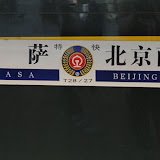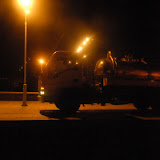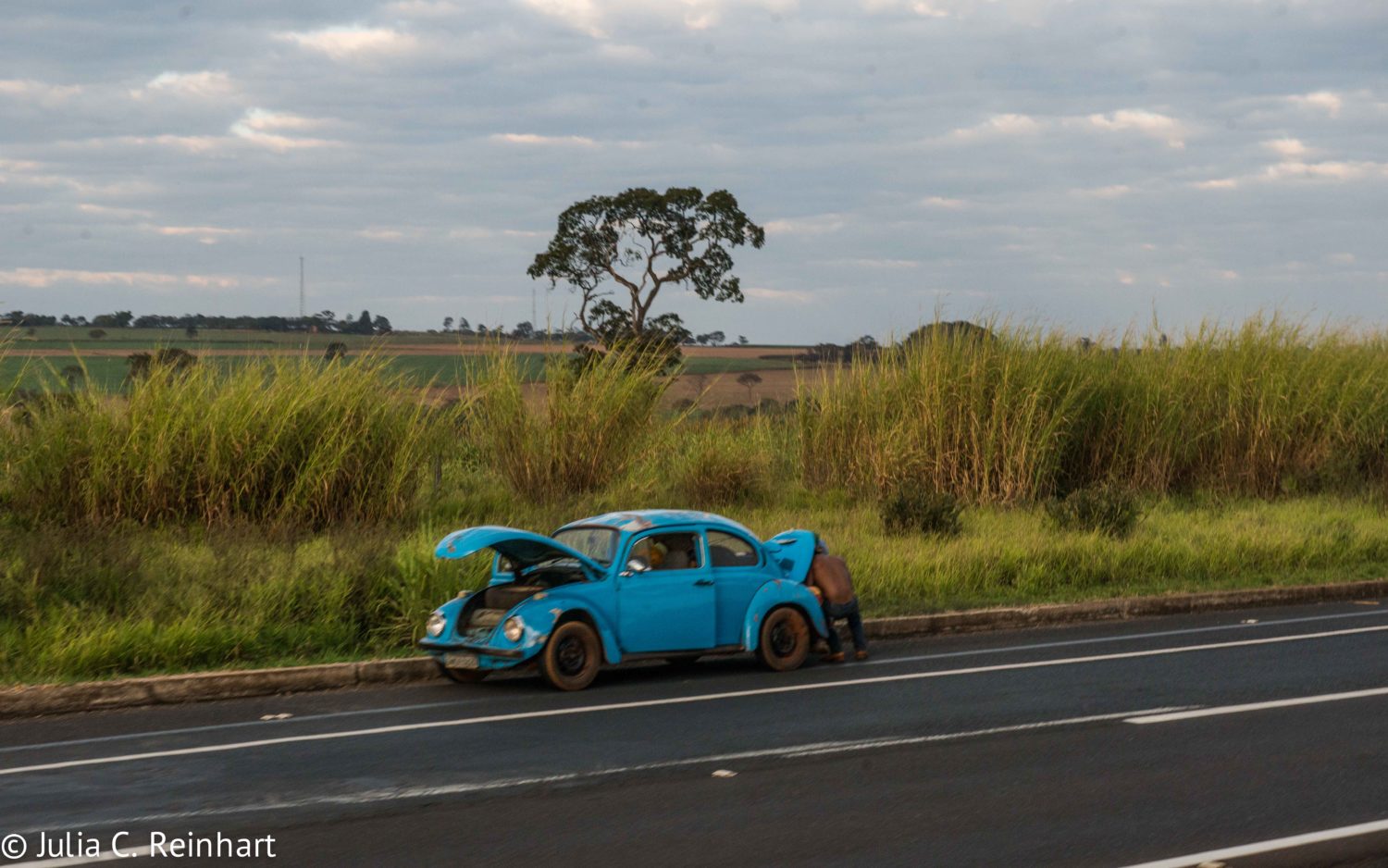Riding busses through the countryside of Brazil between Rio, Brasilia, and Sao Paolo, I had…
Taking The A-Train
Beijing – Xian – Langzou – Xining – Golmud – Nagchu – Lhasa
(departure 9:30pm on 8/12 – arrival 8:00pm on 8/14)
First and foremost: Despite all the stories that you hear about pollution in China (and they’re probably true), rural China can be absolutely and stunningly beautiful. I could see plenty of evidence from the train window of human abuse of nature, ugly architecture and abject poverty, but still, the mountains and valleys outside urbanized areas carried such a beauty I had a hard time sleeping lest I might miss yet another splendid view.
The train trip from Beijing to Lhasa takes about 48 hours, and despite crossing almost 3,000 miles and rising from 142 ft (43.5 meters) above sea level to 15,200 ft (5,068 m) and then descending back to 10,920 ft (3,640 m), we arrived only two minutes late. An impressive performance.
The travel agent I had to engage to secure one of the much sought after tickets for a bed on this train couldn’t understand why I insisted on taking the train rather than flying up to Lhasa. When it became doubtful whether I would be able to board the train due to a slew of officials booking up the train for their own travel, I ended up in a rather lengthy discussion with a sternly looking Chinese man as to why I really didn’t want to fly, as it would be so much more convenient and, most importantly, faster. But no, for me the process of getting there is a crucial part of any journey and in the case of getting to Tibet it also allowed for a gradual acclimatization to the increased altitude rather than being suddenly dumped at 11,000 feet. Also, I had dreamed of traveling on this train ever since I read a review of its maiden voyage in the New York Times a year earlier.
I often think back to the travel stories I heard from my grandfather, who traveled by boat to China and Japan from Alexandria in Egypt in the 1930’s and 40’s, often gone from home for six months at a time and the people he met in the process. I could relive a little of that on my own train journey as I met interesting people and had the time to learn more about them as we rode along.
I shared my compartment with a nice elderly gentleman from Buenos Aires in Argentina and a group of four young travellers from Valencia in Spain, who had to share two beds in 1st and two seats in 3rd class. So, suddenly the focus shifted from trying to be understood in Chinese (not a very successful venture, I’m afraid) to digging out my Spanish, that I hadn’t really used in ten years, and trying to hang in on conversations about anything from politics to the business of getting a travel permit to Tibet, the art of railway construction and Spanish visual artists. I found a good part of my vocabulary had disapeared at first, but slowly worked its way back into my consciousness. In fact, most of the western travellers on the train turned out to be Spanish speaking. There were also a group of girls from Madrid and two groups from Barcelona. Three British also found their way onto the train, but the rest of the travellers was mostly Chinese workers and tourists.
A big topic of conversation was also the enormous amount of infrastructure building we could see from the train. Highways, bridges, houses, railway tracks, telecommunications towers and much more were being built almost where ever we looked. Given how many people we saw working on each project, the builders were definitively in a hurry. News of a collapsed bridge in southern China recently that killed many people has to be seen in that context: China is aching to expand its overall infrastructure to keep up with its economic growth that is by no means limited to Beijing or Shanghai. On our train ride we came through very large cities that seemed to us to lie in the middle of nowhere, and had names we clearly never heard of such as Langzou or Xiling. They had large manufacturing areas with factories obviously going at full steam judging from the smoke on their chimneys.
Still, it is also evident from what I saw through the window, that inequality in China is still very deep (an article in the Economist that I read on the train equals inequality in China to that seen in Brazil and other Latin American countries). In cities you could see people dressed in high level western fashion, talking on their cellphones and driving nice cars, while most farmers that I saw working in their fields were doing all their labor manually, lived in mud houses and wore very simple clothing.
One beautiful aspect of the manual farming work were the haystacks that litter a big part of the countryside, very similar to those I grew up looking at in Monet’s paintings. Since most of farming in Europe and the US is highly automated these days, I haven’t seen many of these haystacks in real life before.
Here are some pictures from the first day of the train ride (Beijing – Xiling)
 |
| Train Beijing – Lhasa Day 1 |
Day 2 (Xiling – Lhasa)
Early in the morning of day two we stopped in a little town called Golmud. A series of tanker trucks came driving along the platform and men exiting from the trucks dragged long pumping lines to the train. Soon I could hear a whistling noise in our cabin: These tankers brought oxygen for the train that was going to be pumped into the train cars until our arrival in Lhasa. By the time we arrived in Golmud, we were already at an altitude of roughly 9,000 ft (3,000 m) and the breathing started to get a little harder. So, the extra oxygen was certainly welcome especially by the time we reached Tangu-la pass at 15,200 ft (5,068 m), the high-point of the journey.
I got up as soon as the sun came out, since this is what I had waited for ever since I decided to take this trip: We were nearing the Tibetan Plateau and with it beautiful mountainous landscapes. The weather unfortunately wasn’t as splendid as it could be (it’s apparently rainy season in Tibet right now), but the vast trundra-like views were still very impressive. See for yourself:
 |
| Train Beijing – Lhasa Day 2 |


Comments (0)